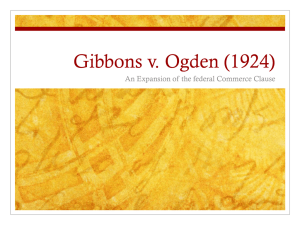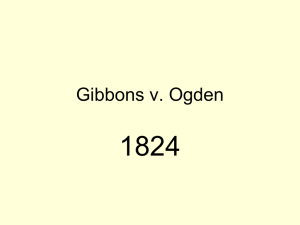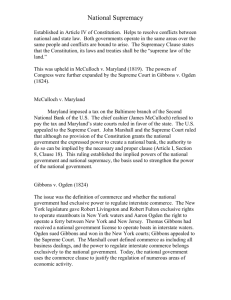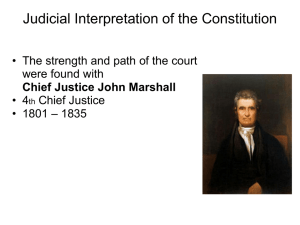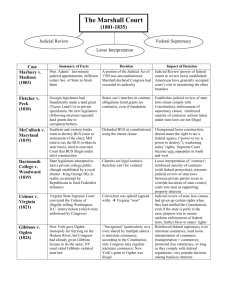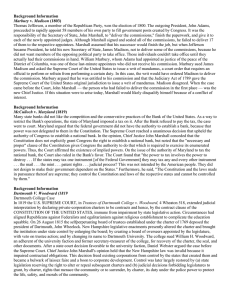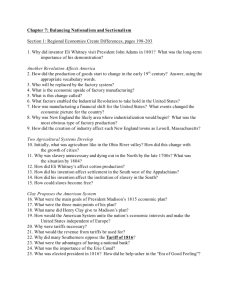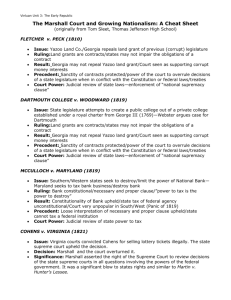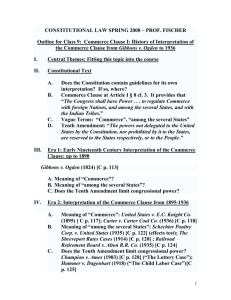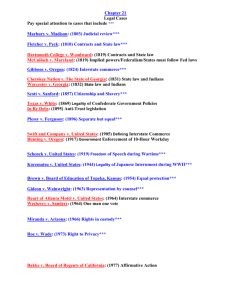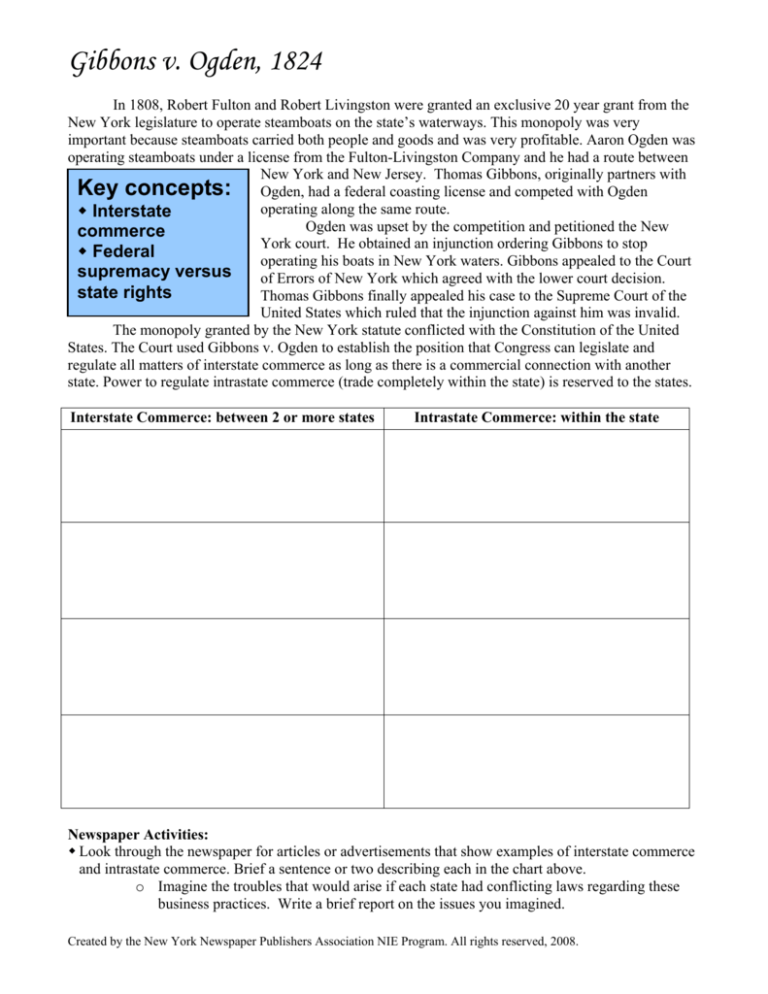
Gibbons v. Ogden, 1824
In 1808, Robert Fulton and Robert Livingston were granted an exclusive 20 year grant from the
New York legislature to operate steamboats on the state’s waterways. This monopoly was very
important because steamboats carried both people and goods and was very profitable. Aaron Ogden was
operating steamboats under a license from the Fulton-Livingston Company and he had a route between
New York and New Jersey. Thomas Gibbons, originally partners with
Key concepts: Ogden, had a federal coasting license and competed with Ogden
operating along the same route.
Interstate
Ogden was upset by the competition and petitioned the New
commerce
York court. He obtained an injunction ordering Gibbons to stop
Federal
operating his boats in New York waters. Gibbons appealed to the Court
supremacy versus
of Errors of New York which agreed with the lower court decision.
state rights
Thomas Gibbons finally appealed his case to the Supreme Court of the
United States which ruled that the injunction against him was invalid.
The monopoly granted by the New York statute conflicted with the Constitution of the United
States. The Court used Gibbons v. Ogden to establish the position that Congress can legislate and
regulate all matters of interstate commerce as long as there is a commercial connection with another
state. Power to regulate intrastate commerce (trade completely within the state) is reserved to the states.
Interstate Commerce: between 2 or more states
Intrastate Commerce: within the state
Newspaper Activities:
Look through the newspaper for articles or advertisements that show examples of interstate commerce
and intrastate commerce. Brief a sentence or two describing each in the chart above.
o Imagine the troubles that would arise if each state had conflicting laws regarding these
business practices. Write a brief report on the issues you imagined.
Created by the New York Newspaper Publishers Association NIE Program. All rights reserved, 2008.

